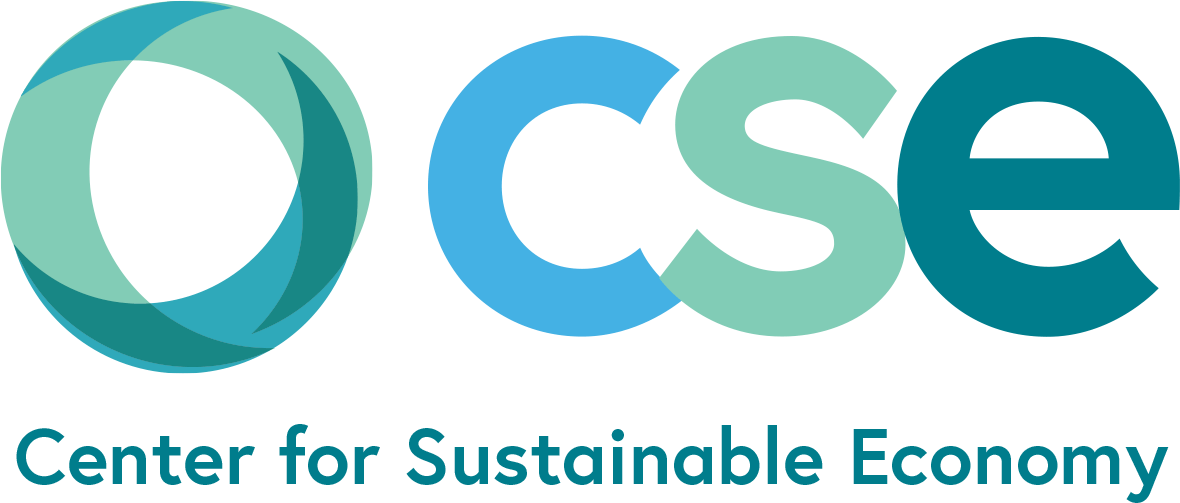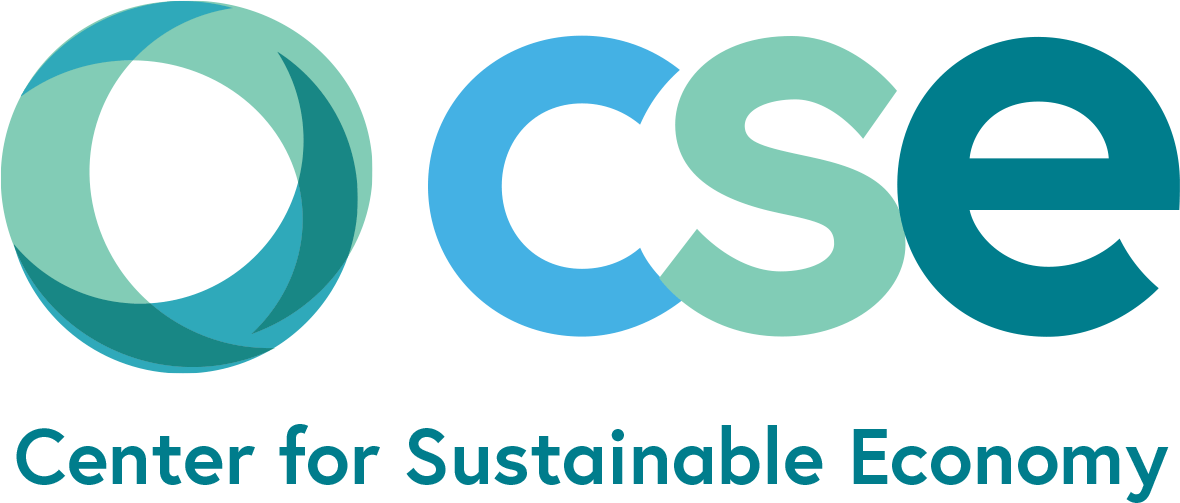2023 Year in Review
January 16, 2024
CSE scored big gains on fossil fuel risk bonds and forests for climate

2023 Program Highlights
Every year CSE provides a concise summary of work accomplishments under our various programs to keep our supporters up to date, maintain an archive of progress over the 3 decades we have been in existence (Forest Conservation Council and Ecology and Law Institute before 2004) and to provide references to important decision making processes, publications, and other information that will aid public engagement on these issues. This update is current as of 12-31-23.
New Measures of Progress
In August, staff from Representative Ilhan Omar’s office got in touch with us about re-introduction of the GPI Act of 2022 – this time with a few dozen co-sponsors and timed to coincide with meaningful decision points in approval of the federal budget. They are also interested in developing communication materials about the imperative of accounting for all costs and benefits of economic activity fueled by federal spending (in particular, money included in the Inflation Reduction Act). CSE and its partner Ecology and Democracy Network (MN) are continuing to advise Rep. Omar’s staff and look forward to a high-profile reintroduction event sometime in the spring of 2024.
Climate Justice – Fossil Fuel Risk Bonds
The year 2023 saw major advancements in our work to hold the fossil fuel industry accountable for the externalized costs of spills, accidents, explosions, infrastructure abandonment and climate change associated with production and consumption of fossil fuels in the US. Some work has progressed at the federal level, but most of the action has been in the Pacific Northwest where three decision making processes initiated by our FFRB organizing are proceeding as planned. Here is a quick update:
Federal legislation
As reported last year, and with assistance from Congressman Jamie Raskin (D-MD) and technical input from NRDC and other allies, there is a working draft of federal fossil fuel risk bond legislation (“Fossil Fuel Infrastructure Financial Accountability Act”) ready for introduction pending the outcome of other legislative initiatives that are advancing components of that legislation. The draft legislation would implement the fossil fuel risk bond concept by requiring owners of fossil fuel infrastructure to disclose information about any financial assurances they may already have, require the Secretary of Commerce to conduct an assessment of the residual financial risks to taxpayers, require the Secretary to promulgate new rules to shore up financial assurance requirements to eliminate the public financial risks associated with infrastructure abandonment and accidents, including a worst-case scenario, and to establish a Fossil Fuel Risk Trust fund capitalized by fees to provide badly needed funding for climate adaptation.
The draft has been circulated to key staff in both chambers, and elements of the proposed legislation have already helped garner support for efforts to tighten up bonding requirements for oil and gas leases and otherwise levy fees on fossil fuel infrastructure owners to help offset public costs. These included bonding and fees contained in the Inflation Reduction Act (IRA) but unfortunately, these provisions were removed during last minute deal making. However, new bonding requirements for oil and gas leases are now moving forward in H.R. 4301 – Bonding Reform and Taxpayer Protection Act of 2023 (Porter, CA). Depending on the outcome of this bill and other measures, CSE and its partners will revisit our draft fossil fuel risk bond legislation to see if any changes are warranted.
Pacific Northwest FFRB processes
While CSE is working at the national level and in six states with NGOs and elected officials to promote FFRB programs, the most promising developments come from the Pacific Northwest where three separate processes have been kicked off by the organizing work of CSE and its partners. Here, advocates have been promoting a model of FFRB implementation that unfolds in three distinct phases:
- Phase I – enabling legislation. While authority for implementing FFRB programs may already exist in a given jurisdiction, it is helpful to solidify that authority through enabling legislation. As recommended by CSE and its partners, that legislation should include findings connecting the dots between fossil fuel infrastructure, public health and safety risks, and allocation of funds for an economic risk assessment to establish the legal basis for subsequent regulation.
- Phase II – risk assessment. Once commissioned, the risk assessment quantifies the anticipated public financial costs associated with worst-case accident and disaster scenarios for fossil fuel infrastructure as well as the anticipated costs of climate change, mitigation, and adaptation. A gap analysis looking at the adequacy of financial assurance and adaptation funding is also conducted during this phase as well as recommendations for policy interventions to close this gap.
- Phase III – program implementation. Through rulemaking or ordinance, a jurisdiction adopts new financial assurance requirements for fossil fuel facilities based on the gap analysis and a surcharge for fossil fuel transactions to offset anticipated public financial costs.
The general three-phased approach is common to many forms of regulation (i.e. an initial resolution calling attention to the problem, a study to document the magnitude of local risks, and a rulemaking phase for implementation of recommendations). While a more streamlined approach could be to simply go right to the rulemaking phase – in this case, imposition of financial assurance and FFRTF surcharges – skipping the quantification of actual financial and economic risks on the ground would undermine the credibility, and potential legal footing, of the final regulatory requirements.
Three case studies demonstrate how FFRB initiatives are moving forward in the Pacific Northwest. They include Multnomah County, Oregon, King County, Washington, and the State of Washington with respect to oil spill liabilities.
Multnomah County, OR – Rulemaking for the CEI Hub well under way
In 2019, the Multnomah County Commission adopted a Phase I resolution opposing new fossil fuel infrastructure and initiating work on a FFRB program to “require the fossil fuel industry to bear the full cost of damages potentially caused by transporting and storing fossil fuels.” The resolution included findings that made a clear link between the storage, refining, transport, trade and combustion of fossil fuels and a wide range of local health, safety, environmental and economic risks. It is important to make these findings in order to ward off legal challenges based on federal or state preemption (i.e. Interstate Commerce Clause) and keep FFRB program initiatives firmly grounded in a local jurisdiction’s police powers.
The resolution initiated a Phase II analysis of economic risks associated with a worst-case scenario at the Critical Energy Infrastructure (CEI) Hub in Portland along the banks of the Willamette River as a first step towards internalizing those risks through various financial assurance mechanisms or requirements for risk mitigation. The CEI Hub contains 630 tanks of petroleum-based liquids distributed over 220 acres, and stores over 90% of Oregon’s liquid fuels.
In early 2021, the Phase II risk analysis was completed by the firms ECONorthwest, Salus Resilience, and Enduring Econometrics. The study found that in the event of magnitude 8 or 9 Cascadia Subduction Zone (CSZ) quake – long overdue for the Pacific Northwest – a massive release of 95 – 194 million gallons of fuel would likely occur, some of which would catch fire and potentially result in a one or more catastrophic explosions. At the high end, such a spill would be larger than the Deepwater Horizon disaster (~134 million gallons), making it the largest marine spill in US history. In terms of economic damages, the study considered a broad range of both market and non-market effects and assigned monetary values to seven. Depending on the size of the spill, failure rate for storage tanks, and utilized capacity at the time of the quake, damages could range from a low of $359 million to a high of $2.6 billion.
With this tally of potential damage in hand, decision makers are now considering options for Phase III in order to shift these financial and economic risks back onto infrastructure owners. One scenario involves assessment of seismic related risks by individual companies (there are about 10 in the CEI), mitigation planning to harden this infrastructure, and (potentially) bonding against mitigation plans. Bonding for decommissioning is also on the table since in the event of a catastrophic quake, abandonment without post-catastrophe clean up and repair is a distinct possibility. In the spring of 2022, the Oregon Legislature passed SB 1567A to jumpstart this process. The state’s Department of Environmental Quality has begun a rulemaking initiative, and the initial round of facility assessments are expected to be completed by June 1st, 2024 as the legislature intended. After this, discussions over bonding against mitigation plans and decommissioning will begin in earnest.
An alternative, more direct pathway to Phase III regulations would require the Multnomah County Commission to enact financial assurance requirements and FFRTF surcharges on a track separate from the seismic risk assessments since SB 1567A does not explicitly call for either. CSE has taken the EcoNorthwest analysis and calculated the basis for per gallon surcharges to offset potential public liabilities associated with a worst case CSZ quake. So there are no real barriers to moving ahead with some form of a levy at this point. CSE and its partners will be pursuing this approach while continuing to monitor implementation of SB 1567A writ large.
King County, WA – Final Phase III regulations now in place
In July of 2020, the King County Council enacted a Phase I ordinance in the form of amendments to its 2019 Comprehensive Plan establishing a new permitting system for fossil fuel facilities and a fossil fuel risk bond evaluation to lay the groundwork for new financial assurance requirements. As with Multnomah County, King County found that “the operation of fossil fuel facilities carries risk of explosion, leaks, spills and pollution of air and water,” which, in turn, subject nearby communities to a litany of health and safety risks. King County is an interesting case study for FFRB programs because there are no active permits or applications for fossil fuel facilities at this time in the unincorporated portions of the Seattle metropolitan area where the Council has jurisdiction. So enacting a FFRB program here is largely a deterrent strategy against new or expanded facilities.
King County’s Phase II risk assessment was completed in June of 2022. The risk assessment concluded that three types of fossil fuel facilities could present public financial risks to the county in the form of costs related to health, safety, and infrastructure abandonment. These include thermal (gas) electric power plants, liquefied natural gas (LNG) plants and oil terminals. The assessment found sufficient evidence of past high-cost incidents to propose requiring proof of adequate financial coverage for explosions from any of the three types of facilities. It also recommended that self-bonding not be accepted as a financial assurance mechanism to cover financial risks associated with potential explosions or site contamination and that advance planning around potential onsite hazards and facility decommissioning be required along with financial assurances against these potential public liabilities. Both of these recommendations are well justified based on the financial assurance gaps and issues identified in CSE’s 2016 report.
A draft ordinance was subsequently prepared to enact these recommendations, and in May of 2023 the King County Council adopted a final Phase III ordinance putting these FFRB program recommendations in place. With this, King County has become the first US county to enact a full policy “trifecta” on the FFRB program concept. The Phase I, II, and III materials provide an excellent template to guide development of FFRB programs in jurisdictions across the US with or without significant concentrations of fossil fuel infrastructure.
State of Washington – New financial assurance rules for oil vessels and onshore facilities are being developed
Led by Representative Mia Gregerson (D-33) the Washington legislature passed HB 1691 in the spring of 2022 as a first step towards implementing fossil fuel risk bond programs at the state level. HB 1691 requires the owners or operators of any covered oil vessel or oil facility to obtain a certificate of financial responsibility from the Department of Ecology (DOE) that guarantees such owners fully cover the costs of a worst-case spill. Acceptable forms of financial assurance include insurance, surety bonds, corporate guarantees, letters of credit, certificates of deposit, or protection and indemnity club membership. The legislation does not prohibit, but instead puts conditions on self-insurance as an option. Oil spills of all sizes are frequent visitors to Washington’s waters, and HB 1691 was seen as a way to start shifting the significant cost burden of monitoring and responding to these spills to fossil fuel infrastructure owners. For the largest oil tankers, financial assurances of at least $1 billion are now required.
Initially, Rep. Gregerson drafted a more comprehensive statewide Phase I bill that would have expanded the Department of Ecology’s existing financial assurance requirements for hazardous facilities to include fossil fuel infrastructure. The first step in this statewide approach would have been a Phase II DOE report to the legislature evaluating the financial and economic costs and risks associated with fossil fuels and climate change, a gap analysis of existing financial assurance requirements, and recommendations to the legislature of how to close those gaps. DOE reviewed the legislative proposal and concluded that the analysis would cost about $1 million to complete – a price tag a bit too high to fly under the radar screen and avoid political pushback. Of course, investing $1 million to avoid potentially billions of dollars of economic costs is a great deal for public finance, but in a political climate of fiscal austerity such a price tag for the Phase II study was enough to derail the more comprehensive approach. As an alternative, HB 1691 is viewed as an incremental, but important step forward.
The law is a bit complex, and DOE is now charged with initiating a host of new rules to comply. These include (a) a rule governing the effective date for owners and operators of covered vessels or facilities to obtain the required certificates of financial responsibility; (b) a rule limiting use of a self-insurance option provided that such a rule must require the applicant to thoroughly demonstrate the security of the applicant’s financial position; (c) a rule governing the suspension, revocation, and re-issuance of certificates of financial responsibility; (d) a rule to evaluate whether an applicant for a financial responsibility certificate for an onshore or offshore facility has demonstrated an ability to compensate the state and other governmental entities for damages that might occur during a worst case oil spill, and, optionally (d) a rule to update the hazardous substances currently covered by the state’s existing financial responsibility requirements to maintain consistency with the Comprehensive Environmental Response, Compensation and Liability Act (CERCLA).
CSE and its partners are participating in this rule making process as it evolves. For example, in late October, CSE and six other regional NGOs sent detailed input to Department of Ecology asking for the initial financial assurance unit cost of $27,700 per barrel be significantly raised to reflect worst case outcomes as well as a host of other issues that would have weakened the effectiveness of the new financial assurance rules. In response to our comments, DOE is now considering a significant increase in the per-barrel amount and other changes we have requested – such as closing loopholes on the time delay between financial assurance acquisition and their effect on the ground, or other issues related to transparency and public records.
Report – Implementation Guidance for Local Government
CSE has published a report entitled “Fossil Fuel Risk Bond Programs – Implementation Guidance for Local Government,” now available on our website. The report provides a broad overview of FFRB programs, an explanation of how these programs are rooted in existing policy mechanisms, a demonstration of how they can be used to generate funding for climate adaptation, and an update on all the progress that has been made in the Pacific Northwest. Brookings Institution has agreed to publish the report on its website as well and has completed a peer review process for that. We expect it to be up on the Brookings site early next year.
Forests for Climate and Biodiversity
This year saw scientific advances in forest carbon accounting and calls for climate smart forestry rise much higher on the global climate change agenda. CSE is proud to have been part of that effort. Our work this year focused on strategic litigation in Washington State, the Forest Carbon Coalition, and preparation of a peer reviewed manuscript proposing a forest carbon tax to address the serious climate damages from industrial logging operations.
Forest Carbon Coalition
Under a partnership with United Plant Savers, we hired a new coalition coordinator last May. His name is Tanner Filyaw, and he is based at the UPS office in Rutland, Ohio. He’s a great fit for the coalition since he specializes in promoting non-timber forest uses, plant biodiversity, carbon and other ecosystem services. In addition to keeping in touch with our 100+ member coalition and handling the nuts and bolts of our Zoom calls, outreach efforts, and participation in a few high-level decision-making processes (like federal forest planning), he is an educator and has a nice portfolio of YouTube videos that are being disseminated to educate members and supporters about the nexus between forest carbon and plant conservation and cultivation.
In June, Center for Sustainable Economy (the FCC secretariat) filed new litigation to halt the deforestation of native, mature rainforests in western Washington by the State’s Department of Natural Resources (DNR). As you may recall, last year, we scored the first legal victory in the country on the failure of a regulatory agency (DNR) to consider the climate impacts of clearcutting including its social costs. The high-profile battle to save Washington’s legacy forests is regularly featured in major media outlets, like the Seattle Times, who published a story on our litigation against the Wishbone timber sale in King County (home to Seattle). As you know, CSE’s case is based on the catastrophic climate and biodiversity costs of DNR’s logging program, and this new round of litigation is likely to have a big impact on state policy, if successful.
Also in King County, FCC coalition members (including CSE) were successful in getting the King County Council to support our lawsuit by filing a request to DNR asking for the same relief we asked for in the lawsuit – full and fair accounting of climate impacts and adoption of climate smart alternatives to the timber sale design. As a result of all the positive feedback they received, Council Chair Dave Upthegrove decided to run for Commissioner of State Lands, something he had been mulling over for a few months prior to our lawsuit. He would be a staunch ally of FCC if elected.
In July, and at the request of one of our member groups, CSE/FCC released an analysis of the climate impacts of the proposed Nez Perce – Clearwater National Forest plan, quantifying greenhouse gas emissions associated with logging, grazing, and road building over the life of the plan as well as other climate impacts, such as increases in flooding, heat waves, and water shortages. Funded in part by this grant and partially by the member group Friends of the Clearwater, the analysis is a valuable tool for FCC members nationwide as they participate in the forest planning process and try to hold the US Forest Service accountable. Tanner subsequently disseminated the report to the entire membership, and we’ve already received several requests to replicate the effort in other regions. Also, the report received front page coverage in the Idaho Statesman Journal. The reporter Julie Jung did an excellent job of covering our concerns.
In late August, capping out about 3 months of steady work, FCC released version two of Repairing America’s Tattered Forests: Maximizing natural carbon removal while revitalizing our forgotten rural areas. The new version is updated to reflect a wealth of new policy, scientific, and economic information that has emerged since 2021, including the Glasgow Leaders Declaration to end deforestation and forest degradation by 2030. The report was disseminated broadly using our movement infrastructure tool Congress + to roughly 200 legislative aids and environmental policy leads at progressive member offices on Capitol Hill as well as broadly to the media and our members and partners.
In October at a webinar hosted by the Sierra Club, John Talberth presented “The Climate Impacts of Industrial Logging Practices” to a large group (110+) online as part of the Forest Protection Forum’s lecture series. The talk, summarizing over three years of research, makes the case that compared to the natural carbon cycle, industrial logging practices reduce carbon storage and carbon sequestration on the land and greatly increase GHG emissions and the vulnerability of our forest dependent communities to climate change. This was the largest turnout yet in the forum’s three-year history. The full Youtube video is available on request.
DNR Carbon and Forest Management Workgroup
In November, John Talberth received word that he was appointed to the Washington DNR’s Carbon and Forest Management Work Group, created by the legislature to promote the conservation of older, carbon dense forests on state-owned lands. This is an exciting opportunity to get good science and economics to the forefront of DNR’s management, which has been pro-timber for decades. He looks forward to representing FCC and its regional members in this venue.
Forest carbon tax and reward
In mid-December, authors John Talberth and Ella Carlson submitted the revised manuscript "Forest Carbon Tax and Reward: Regulating greenhouse gas emissions from deforestation and forest degradation in the US" to the journal Environment, Development and Sustainability. This is the first academic paper of which we are aware that applies the idea of carbon taxes to emissions from the logging sector. Two reviewers asked for several revisions to the original manuscript submitted last August, and we now eagerly await a final decision in the next few weeks. If published, the article will form the basis of our outreach efforts in Congress and state legislatures to pursue a forest carbon tax program along the lines of what we modeled.The body content of your post goes here. To edit this text, click on it and delete this default text and start typing your own or paste your own from a different source.


